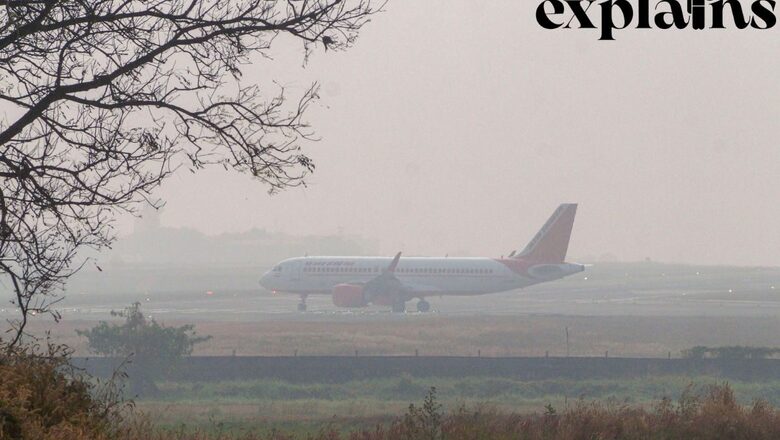
views
A thick blanket of fog descended upon Delhi, causing widespread disruptions and delays of flights leading to and from the national capital. There were at least 110 flights experiencing delays while many others were either diverter or cancelled due to the dense fog.
Other airports in the country including Hyderabad, Bengaluru and Ahmadabad also reported disruptions of flight movement due to the bad weather. Major airlines including IndiGo, SpiceJet, and Vistara have warned that ongoing bad weather conditions in Delhi and Kolkata could further impact flight schedules.
The month of January is seeing dense fog causing a serious decline in both general visibility and runway visual range visibility, leading to the disruption of flight movement as the visibility falls below certain standards.
Kind attention to all flyers!#Fog #FogAlert #DelhiAirport pic.twitter.com/FJDGPhyLmj— Delhi Airport (@DelhiAirport) December 26, 2023
The operations at the airport are being conducted under CAT III B, which is a navigation system that allows for landings with a minimum visibility of 50 metres, where the visibility is quite low.
Delhi airport operator Delhi International Airport Ltd (DIAL) announced last month that flights that are not CAT III compliant may get affected.
What is CAT III Technology?
Indira Gandhi International Airport in Delhi is equipped with a state-of-the-art anti-fog landing system called CAT IIIB Instrument Landing System (ILS). ILS is a guidance system that helps planes land in low visibility conditions with the help of radio signals and sometimes high-intensity lighting arrays, according to a report in The Quint.
CAT III is a navigation system that helps planes land during dense fog and inclement weather conditions when visibility is low. It allows for landings with a minimum visibility of 50 metres.
The initial cost of setting up the whole CAT IIIB system at an airport can go up to Rs 10 crore and the maintenance cost can go around Rs 50 lakh on a monthly basis. The CAT IIIB system at the Calcutta airport was installed at a cost of Rs 130 crore.
How CAT III Works?
In the CAT II system, a pilot is guided by the signalling system till 100 feet above the ground, when the runway isn’t in sight. In CAT III-B, an aircraft can descend till 50 feet above the ground because of the advanced signalling system. Then the pilot would see the approach and touchdown zone-lighting system.
A category III B approach is a precision approach and landing with no decision height or a decision height lower than 50 ft (15m) and a runway visual range less than 700 ft (200m), but not less than 150ft (50m).
The entire process is automated and a voice prompt tells using a countdown how far the plane is away from the runway, when the flaps have to be deployed and when the brakes need to be applied.
The Delhi airport has been equipped with the CAT IIIB system which operates on three runways. However, in the current dense fog season, only single CAT III runway is operational as crane used in construction site near another runway is distorting signals for flights.
Other airports in the country that support this technology are Amritsar, Jaipur, Lucknow and Kolkata airports.
How Can Flights and Pilots Become CAT IIIB Compliant?
An airliner is required to acquire the CAT IIIB certification to be equipped with the technology. The airliner also needs to train pilots as not all pilots flying domestic aeroplanes are trained to land on the CAT IIIB system.
Therefore, flights which are not CAT IIIB compliant cannot operate in regions where fog or low visibility is expected. Most airlines operating in India already have pilots who are CAT III-B compliant. In India, airline companies that support CAT IIB are Vistara and Indigo among others.
What is CAT IIIC System?
Using the CAT IIIC system, which is better than CAT IIIB technology, planes can land even in zero visibility. The airports that use this technology include New York’s JFK International Airport and the Heathrow airport in London.




















Comments
0 comment